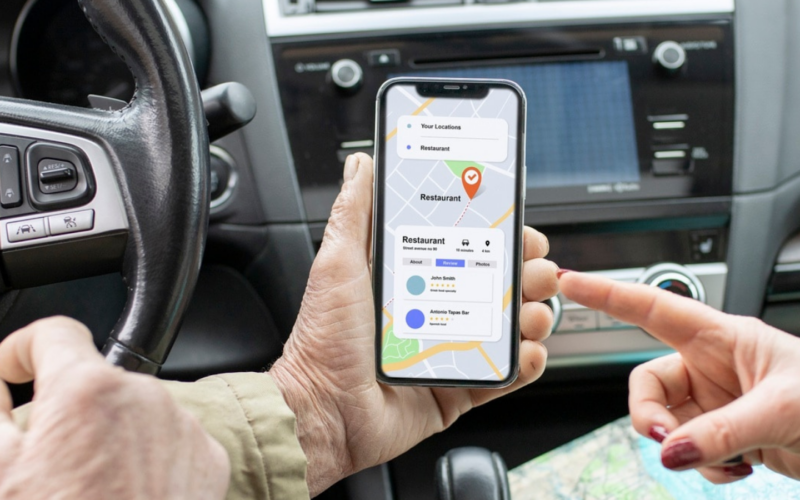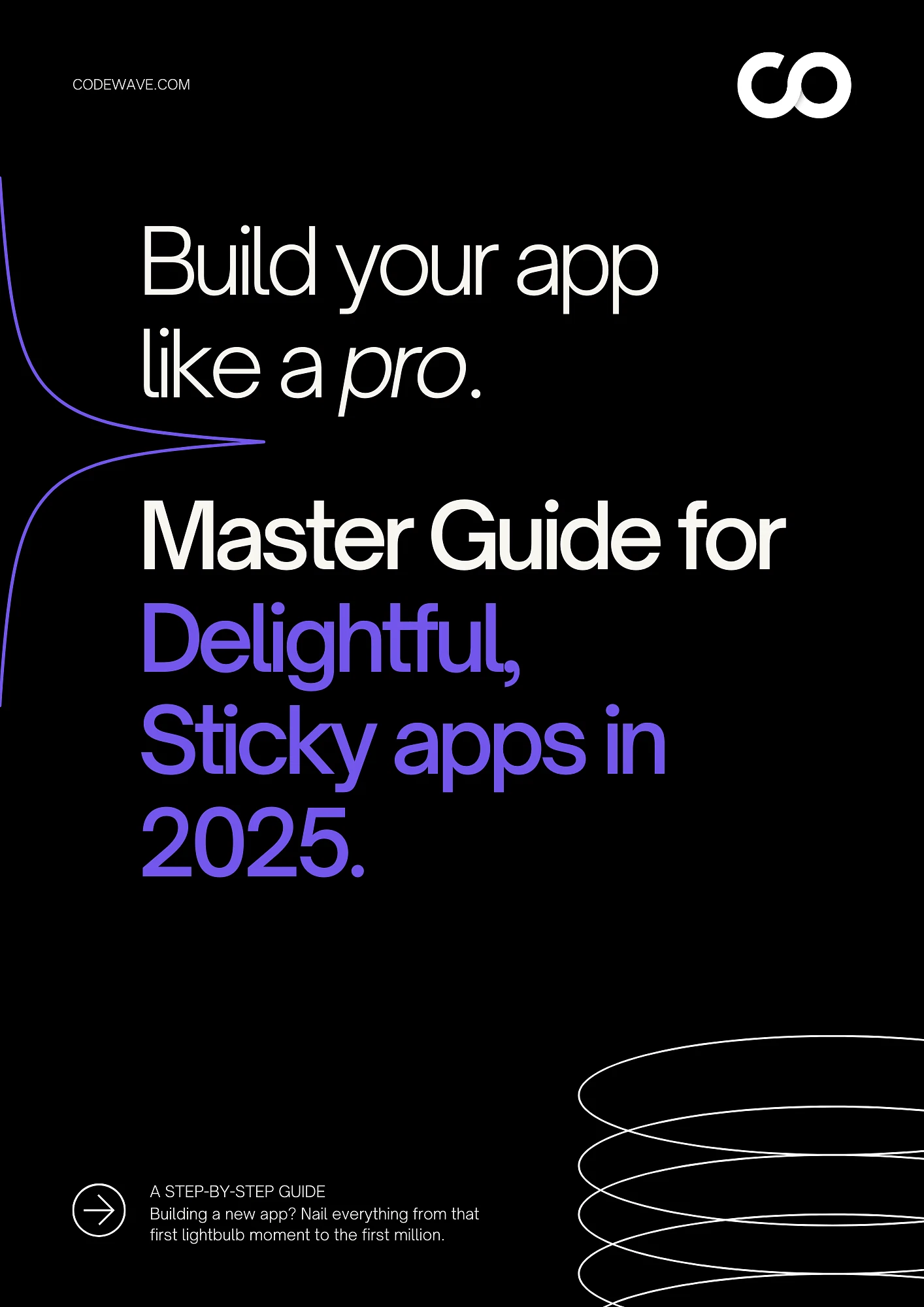The global transportation management system market is set to nearly double from $18.5B in 2025 to $37B by 2030, driven by the rise of cross-border e-commerce and smart logistics platforms. Transportation app software development is playing a major role in this rapid transformation, reshaping how businesses and consumers interact with transportation services.
However, the challenge lies in understanding the costs involved, choosing the right features, and implementing the right monetization strategies.
This article will break down the key steps in developing a successful transportation app, helping you maximize your investment and revenue potential.
Key Takeaways
- Must-Have Features: Ride booking, real-time tracking, secure payments, driver and user management, and ratings.
- Tech Stack: GPS APIs (Google Maps), payment gateways (Stripe/PayPal), backend frameworks (Node.js, Django), real-time tracking (Socket.IO).
- Development Process: Plan, design, develop frontend and backend, integrate APIs, and test thoroughly.
- Cost Breakdown: Basic apps start at $20,000; complex apps range from $50,000 to $300,000+ depending on features and platforms.
- Why Codewave: Codewave provides tailored, scalable solutions with expertise in seamless development, user experience, and app integration.
Essential Features of Transportation Apps
Transportation apps are transforming the way we move, offering efficient and cost-effective solutions for both users and service providers. With over 35.4 billion transportation app downloads worldwide, it’s clear that mobile logistics solutions have shifted from “nice-to-have” to a critical component for business success.
When considering transportation app software development, it’s important to understand the different types of apps that dominate the market.
Each type serves a distinct need, which means businesses can cater to various user segments.
- Ride-Hailing: Apps that connect passengers with drivers for quick, on-demand rides. Think Uber or Lyft.
- Car-Sharing: Allows users to rent cars for short periods. This model is perfect for those who need a vehicle but not full-time ownership.
- Public Transit: Apps that help users plan, track, and pay for public transportation routes. They improve the overall commuting experience.
- Delivery Services: Focused on getting packages, groceries, or food delivered quickly, this category has seen explosive growth with apps like DoorDash and Postmates.
When developing a transportation app, understanding the core features is essential to building an app that meets user needs and ensures smooth operation for drivers and admins.
Here’s a breakdown of key features across the different user segments:
User Features
- Easy account creation & login options (email, social media, or mobile number)
- Real-time GPS tracking and interactive map
- Ride booking functionality (choose ride type, schedule a ride)
- Payment gateway integration (support for credit/debit cards, digital wallets)
- Ride rating and review system for feedback
- Notifications for ride status updates and promotional offers
- Access to ride history and invoicing
Driver Features
- Simple driver registration and profile setup
- Real-time navigation and route optimization for efficiency
- Tracking of earnings and payments
- Ride acceptance/rejection functionality
Admin Features
- Comprehensive dashboard for analytics (track rides, drivers, and revenue)
- User and driver management tools
- Payments and commission tracking
- Support ticket management for resolving issues
These are just the essentials, but they create a strong foundation for the app, ensuring a user-friendly experience while providing the necessary tools for drivers and administrators to manage the app effectively.
Looking to build a high-performance mobile app? Explore Codewave’s Mobile App Development services to create seamless, user-friendly apps that elevate your business. Start building your app today!
With the core features in place, the next step is understanding the technologies that bring them to life.
Technologies Behind Transportation Apps
The technology behind transportation app software development is what makes its features function flawlessly. From GPS tracking to payment integration, the right tech ensures smooth operations. Let’s look into the key technologies that power these apps and keep everything running efficiently.
Frontend Development: Building the User Interface
Frontend development is crucial in creating an intuitive and engaging user experience. It focuses on how the app looks and interacts with the user. For transportation app software development, the frontend is responsible for everything from ride booking screens to the real-time map view.
When deciding on the right approach, you’ll need to choose between native and hybrid apps based on your business goals, budget, and target audience.
| Feature | Native App | Hybrid App |
| Platform | Built specifically for iOS or Android | Built for multiple platforms (iOS, Android) |
| Development Time | Longer, as separate apps are built for each platform | Faster, since one codebase serves all platforms |
| User Experience | Smooth and seamless, platform-specific elements | Can be less fluid, with slight lag or glitches |
| Cost | Higher cost for separate development per platform | Lower cost, as only one codebase is needed |
| Technology Stack | iOS: Swift, Android: Kotlin, Java | React Native, Flutter, Ionic |
Backend Development
The backend is where the magic happens. It’s responsible for handling the logic, data storage, and integration of all the features your app relies on.
From processing payments to tracking rides in real-time, the backend ensures that all your app’s operations function seamlessly.
- Cloud Servers: Cloud platforms like AWS, Google Cloud, and Microsoft Azure provide the infrastructure needed to store data, run server-side logic, and handle app scalability.
They offer flexibility, reliability, and cost-efficiency for growing businesses.
- APIs (Application Programming Interfaces): APIs are essential for integrating third-party services, such as GPS tracking, payment gateways, or ride-hailing features.
Popular APIs for transportation apps include Google Maps API for maps and routing, Stripe for payment processing, and Twilio for SMS or communication services.
- Database Management: A transportation app needs to handle large amounts of data efficiently. SQL databases like PostgreSQL and MySQL are often used for transactional data, while NoSQL databases like MongoDB are better for unstructured data such as ride history or user profiles.
Proper database architecture ensures fast queries, data integrity, and scalability.
Need a tailored solution for your business? Explore Codewave’s Custom Software Development services to create software that fits your unique needs and drives growth. Start building your custom solution today!
GPS and Mapping Integration
GPS and mapping integration are central to any transportation app, especially for ride-hailing and delivery services.
- Google Maps API: The go-to solution for transportation app software development. It offers precise location tracking, route optimization, traffic updates, and geofencing capabilities.
- Mapbox: An alternative to Google Maps, Mapbox provides highly customizable maps and advanced geospatial capabilities. It offers superior flexibility for creating tailored user experiences, such as custom maps, user-defined routes, and offline navigation features.
- Custom Solutions: For highly specialized needs, custom mapping solutions can be developed. These solutions can integrate your app with proprietary data sources, unique routing algorithms, or location-specific features.
Payment Gateway Integration
Payment gateway integration is crucial for transportation app software development, ensuring users can pay for their rides or deliveries with ease and security.
- Stripe: Known for its easy integration and support for multiple payment methods (credit/debit cards, wallets), Stripe is a top choice for businesses looking for scalability and security.
It supports recurring payments, which is useful for subscription-based models, and offers built-in fraud protection.
- PayPal: PayPal is widely recognized and trusted by consumers, offering quick and secure payments. It allows users to pay via their PayPal balance, credit/debit cards, and other methods.
While PayPal’s fees are slightly higher than Stripe’s, its widespread use can boost user confidence and conversion rates.
- Custom Payment Solutions: For businesses with unique needs, a custom payment gateway can be built to integrate with specific regional payment systems or cryptocurrencies.
However, custom solutions require more development effort and ongoing maintenance to ensure security compliance.
Push Notifications
Whether it’s alerting users about their ride status, promoting discounts, or sending important updates, real-time notifications are a key feature in any transportation app.
- Firebase Cloud Messaging (FCM): Firebase is a popular choice for delivering push notifications across iOS, Android, and web platforms. It’s highly scalable, easy to implement, and integrates seamlessly with other Firebase services like analytics and user authentication.
FCM allows targeted messaging and scheduled notifications, making it ideal for personalized user engagement.
- OneSignal: OneSignal is another reliable push notification service that offers multi-platform support and a user-friendly interface. It provides powerful segmentation tools, allowing you to send tailored messages based on user behavior.
OneSignal also offers detailed reporting and A/B testing features to optimize your notification strategy.
Now that you have the tech foundation, let’s break down the app development process step by step.
App Development Process: A Step-by-Step Guide
Building a transportation app involves more than just choosing features and technologies; it’s a structured process that takes careful planning and execution. From initial research to post-launch updates, each step is critical in ensuring your app meets user expectations and business goals.
Here’s a breakdown of the essential stages in the app development process:
Planning & Research
Before any coding begins, it’s vital to understand the market and legal requirements.
- Market Research:
Understand your competitors and users. If you’re creating a ride-hailing app, analyze Uber and Lyft.
What are the pain points customers experience? Do they struggle with wait times or have issues with payment methods? Use surveys or tools like Google Forms to gather insights.
- Regulatory Research:
Make sure your app complies with local laws. For example, in many countries, transportation apps need to verify driver backgrounds and ensure insurance compliance.
Research regulations like GDPR for user data protection or regional transport laws.
Designing the User Experience (UX)
The user experience is the first thing your users will notice, so it needs to be smooth and intuitive.
- UI/UX Design Principles: Your app should be simple and easy to use. The goal is to reduce friction, whether it’s booking a ride, processing payments, or tracking rides.
- Wireframing & Prototyping: Tools like Figma or Sketch help you create prototypes to visualize the app before development. Share these with a small group of users for initial feedback.
Early prototypes help prevent future headaches by ensuring you’re on the right track.
Development Phase
Now it’s time to turn your design into a functioning app. This phase focuses on both the user interface and the server-side logic.
- Frontend Development: This is where the user interacts with the app. Depending on your needs, you may go for React Native for a hybrid app or Swift for iOS and Kotlin for Android.
Example:
| import React, { useState } from ‘react’; import { View, Text, Button } from ‘react-native’; const RideBooking = () => { const [rideStatus, setRideStatus] = useState(“Waiting”); return ( <View> <Text>Ride Status: {rideStatus}</Text> <Button title=”Book Ride” onPress={() => setRideStatus(“Booked”)} /> </View> ); }; export default RideBooking; |
- Backend Development:
This involves creating the server that powers the app. Use Node.js or Django for handling requests and storing data. For real-time updates, Socket.io can be used to manage ride tracking.
| const io = require(‘socket.io’)(server); io.on(‘connection’, (socket) => { console.log(‘A user connected’); socket.emit(‘rideStatus’, { status: ‘Your ride is on the way!’ }); }); |
- API Integrations:
For Google Maps API or Stripe for payments, integrate these services into your backend. For example, using the Stripe API to handle payments:
| const stripe = require(‘stripe’)(‘your_stripe_secret_key’); stripe.charges.create({ amount: 5000, currency: ‘usd’, source: ‘tok_visa’, description: ‘Ride payment’, }); |
- Security Features:
Implement HTTPS, secure login, and 2FA (two-factor authentication) for user accounts. Consider libraries like Passport.js for authentication.
Quality Assurance & Testing
You can’t launch an app without proper testing to ensure it functions correctly under all circumstances.
- Types of Testing:
Run unit tests for individual components. Use automated tests to check functionality after every change. Manual tests are essential for user-specific cases, like what happens when users cancel rides or change payment methods.
| test(‘booking a ride changes status to booked’, () => { const { getByText } = render(<RideBooking />); fireEvent.press(getByText(‘Book Ride’)); expect(getByText(‘Ride Status: Booked’)).toBeTruthy(); }); |
- Beta Testing:
Before your app goes live, roll it out to a small group of users. Gather feedback on usability, bugs, and performance.
Focus on real-life conditions to identify issues you might miss in the development phase.
Launch & Post-Launch
Once testing is done, it’s time to launch the app and continue improving it.
- Submitting to App Stores: Make sure your app complies with both the Apple App Store and Google Play Store guidelines. Prepare metadata like the app description and relevant keywords.
- Gathering User Feedback: Monitor user reviews and gather feedback through surveys or in-app prompts. Look for trends in complaints or suggestions. For example, if users complain about ride tracking issues, address that in your first update.
- Ongoing Maintenance: After launch, monitor the app’s performance. Use tools like Google Analytics or Firebase to track user behavior and fix bugs promptly. Update your app regularly to fix issues, add new features, and ensure scalability as your user base grows.
With the development process mapped out, let’s take a closer look at the costs involved in turning your app idea into a reality.
Breakdown of Estimated Development Costs
Understanding the costs involved in developing a transportation app is crucial for managing your budget and expectations. From choosing the right features to selecting the appropriate development team, every decision impacts the overall cost.
Here’s a breakdown of what influences the overall development costs.
1. App Complexity: Basic vs. Advanced Features
The more features your app has, the higher the cost.
- Basic App (ride booking, payment): $20,000 – $50,000
- Intermediate App (real-time tracking, scheduling): $50,000 – $100,000
- Advanced App (AI, machine learning): $100,000 – $300,000+
2. Platform Choice: Native vs. Hybrid
Native apps are more expensive but offer better performance, while hybrid apps are cost-effective for cross-platform deployment.
- Native Apps: Separate development for iOS and Android. Cost: $30,000 – $150,000 per platform.
- Hybrid Apps: One codebase for both platforms. Cost: $40,000 – $100,000.
3. Third-Party Integrations
- Google Maps API: $500/month based on usage
- Payment Gateways (Stripe, PayPal): Fees range from 2.5% – 3% per transaction, plus integration fees of $1,000 – $5,000
- SMS/Push Notifications: $0.01 – $0.05 per message
4. Team Composition: In-House vs. Outsourcing
Using services like Google Maps and payment gateways adds both functionality and costs to your app.
- In-House: $100 – $250 per hour in high-cost regions
- Outsourcing: $30 – $80 per hour in lower-cost regions
5. Maintenance and Post-Launch Costs
Ongoing maintenance and scaling are essential for keeping the app running smoothly after launch.
- Annual Maintenance: 15-20% of initial development costs
- Scaling: Cloud services can cost from hundreds to thousands per month as usage grows.
6. Additional Costs
Don’t forget legal, licensing, and marketing fees, which can significantly impact your total budget.
- Legal, Licensing, Marketing: Fees for app stores, compliance, branding, and user acquisition can add $10,000 – $50,000.
Looking to build a transportation app? Explore Codewave’s Android App Development services to create seamless, high-performance apps for users and drivers. Start building your Android transportation app today!
Building a transportation app takes careful planning, the right tech, and smart budgeting. With the right approach, your app can meet user needs and drive long-term success.
Why Choose Codewave for Your Transportation App Software Development
When your transportation business is ready to develop an app, you need more than just a basic solution. At Codewave, we help you build a customized transportation app that not only meets your business needs but also delivers a seamless, user-friendly experience.
Our expertise spans real-time ride tracking, payment integrations, and intuitive design, ensuring that your app performs flawlessly.
Curious to see how Codewave’s transportation app solutions can elevate your business? Explore our portfolio to see how we’ve helped companies like yours create high-performance, user-friendly apps that streamline operations and enhance the customer experience.
What You Get with Codewave’s Transportation App Solutions
- 50% Faster Ride Booking: Streamlines the booking process for both users and drivers, reducing wait times and improving efficiency.
- 2x Faster Deployment: We turn your transportation app idea into reality quickly, from concept to launch, saving you valuable time.
- Save Up to 20% on Operational Costs: Automates key processes, such as ride tracking and payment handling, so your team can focus on growing the business.
- 30% Lower Development Costs: Our efficient development practices and use of scalable technologies help reduce costs while maintaining high-quality performance.
Our Services Include:
- App Strategy Consultation: We assess your transportation business needs and craft a tailored app roadmap that ensures scalability and meets long-term goals.
- App Design & Development: From concept to launch, we build transportation apps that provide seamless booking, real-time tracking, and payment solutions for users and drivers.
- Integration with Transportation Systems: We integrate your app with existing systems like GPS, payment gateways, and route optimization platforms for smooth operations.
- Interactive Dashboards & Analytics: Our intuitive dashboards provide clear insights into app performance, helping you track metrics and make data-driven decisions to improve user satisfaction and business outcomes.
Curious to see what your data is really capable of? Book a session with Codewave’s experts and discover how we can turn your data into real results.
FAQs
Q. What are the biggest challenges in transportation app software development?
A. One of the biggest challenges in transportation app software development is balancing scalability and performance. As your user base grows, the app needs to handle more rides, track more users, and process payments efficiently without slowing down. Another challenge is ensuring the app integrates seamlessly with third-party services like GPS and payment systems while maintaining high levels of security.
Q. How can I make sure my transportation app stands out from the competition?
A. To stand out, focus on solving unique pain points for your target audience. Whether it’s offering quicker rides, implementing loyalty programs, or providing an enhanced user interface, differentiating your app with features that your competitors don’t offer can make a huge impact. Offering excellent customer service and user experience is also crucial to retaining users, making it key for transportation app software development.
Q. What is the role of real-time tracking in a transportation app?
A. Real-time tracking is a core feature of transportation apps, providing users with live updates on their ride status, driver location, and estimated time of arrival. It enhances the user experience by ensuring transparency and reliability. For transportation app software development, integrating GPS technology and optimizing route algorithms are key to providing accurate tracking and improving overall service.
Q. How much does it cost to develop a transportation app?
A. The cost of developing a transportation app can range significantly based on its features, platform choice (native vs. hybrid), and the development team’s location. A basic app could cost around $20,000, while more complex apps with advanced features like real-time tracking or AI-powered routing could cost $100,000 or more. Transportation app software development should include a detailed cost breakdown to ensure that your budget is properly allocated.
Q. How can AI enhance the user experience in transportation apps?
A. AI can enhance the user experience by providing features such as predictive ride pricing, intelligent route optimization, and even personalized recommendations. By analyzing user behavior and preferences, AI can offer smarter, more efficient solutions, such as suggesting the best times to travel or offering discounts.
Codewave is a UX first design thinking & digital transformation services company, designing & engineering innovative mobile apps, cloud, & edge solutions.







